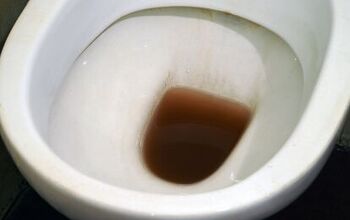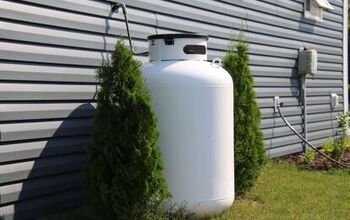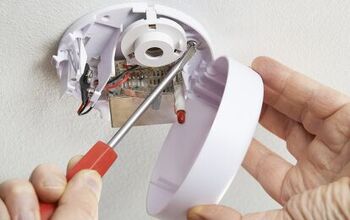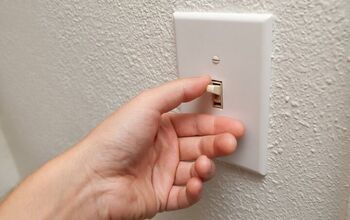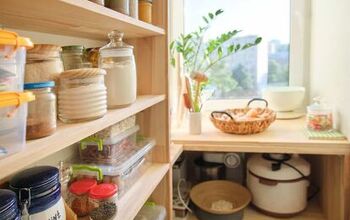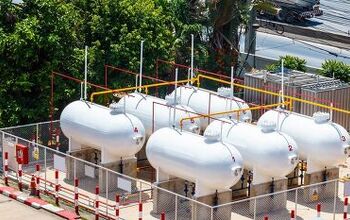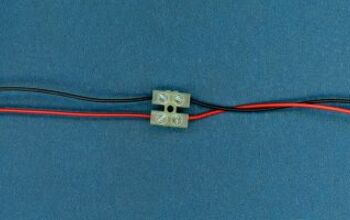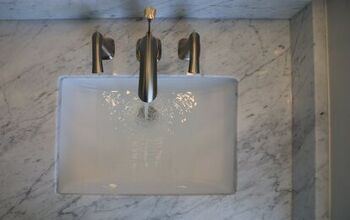Six Reasons Your Swale Isn’t Draining (And How To Fix)

Water drainage is essential for any property that experiences heavy rain. Flooding events can be catastrophic if you don’t have drainage to guide water safely away from your home. Swales are a great option for those with large yards who want a natural and simple drainage option. But if your swale isn’t draining properly, you must find out why, and then fix the problem right away.
If your swale isn’t functioning properly, there could be a blockage somewhere downstream, possibly even in your neighbor's yard. If there is clay or compacted soil under the swale, it might drain very slowly. Remember that swales require occasional maintenance. Sometimes a swale isn’t large enough for your needs, and you may want to add a French drain, dry well, or dry creek bed to improve your drainage issue.
Swales can be highly effective and fairly easy to build in a yard. But like most drainage systems, they aren’t perfect. If you notice your swale overflowing with stagnant water and taking forever to drain, you’ve come to the right place. Below is a list of the top reasons swales don’t drain properly, as well as swale alternatives you may want to consider moving forward.
What Does A Swale Do, Exactly?
Swales are man-made ditches that are built to help direct water away from the home, and allow it to pool up and drain naturally in the ditch. This type of drainage system can be built along a low slope to help channel the water in a certain direction.
The purpose of a swale is to prevent water from pooling up all over your lawn. Instead, the water collects in the drainage swale. This prevents flooding in the home and oversaturation of your lawn. It can also reduce the risk of erosion.
Swales tend to have a natural look and are often covered in grass. This makes them one of the least obtrusive draining methods, and they are fairly straightforward to install.
Six Reasons Why Your Swale Isn’t Draining Properly
1. There’s A Blockage Somewhere
One of the most common reasons why a swale isn’t draining properly is due to some sort of blockage. Water in a swale drains in two ways. First, it drains slowly and naturally into the soil. It also drains using gravity.
If there is a blockage, then a swale cannot flow outward or downstream. Instead, it will fill up and overflow. To fix this problem, you must walk along the swale and look for any blockages. These tend to happen if there are pipes under driveways or roads, or in the narrow sections of the swale. Once you remove the blockage, you should notice a big improvement.
2. The Ground Underneath Is Too Dense
Since swales collect water that must drain naturally, the soil under a swale must have good drainage. Over time, topsoil can float away, and you might be left with nothing but clay or compacted soil.
If water cannot penetrate through the soil in your swale, then it won’t be absorbed. To determine if this is the issue with your swale, dig into it with a shovel and examine the soil beneath. If it is clay or rock-like, then you have found the source of the problem.
If this is the problem with your swale, you can either dig deeper, break up and mix the compacted soil, or add some additional drainage.
3. The Swale Isn’t Big Enough For Your Needs
A swale can help guide water away from the home, but this natural-looking drainage ditch can only help so much. If you live in a climate that gets long periods of heavy rain, then a small swale isn’t going to suit your needs.
You can elongate the swale and make it deeper. This can potentially hold the extra water. If this doesn’t suffice, then consider adding additional drainage.
4. Your Neighbor Has A Blockage
If you live in a neighborhood where the entire street has a connected swale (this is common in wet subtropical areas like Florida), then you might have a unique problem. Sometimes you don’t have a blockage, but one of your neighbors does.
This is a tricky problem to solve, as you can’t legally fix this blockage, especially without your neighbor's permission. The best you can do is ask your neighbor cordially to fix the blockage, offer your help, and hope for the best.
5. Your Swale Needs Maintenance
While swales are very simple drainage systems, they still require some maintenance from time to time. For one, if your swale has grass and plants growing, these plants can eventually do more harm than good.
You must mow and weed-whack the area so it doesn't get too overgrown and filled with dead grass and plants. If you have pipes underneath your driveway, these will need to be maintained and occasionally replaced as well.
6. You Need A Different Or Additional Type Of Drainage System
Climate change is real, and some areas that weren’t that wet are seeing increased rain. In other cases, landscapes and drainage in the area change due to new developments. If you find yourself with a wetter yard than you used to have, you might need additional or completely rethought drainage.
Luckily, swales aren’t the only drainage system. There are plenty of other effective methods you can use to improve drainage on your property, other than your swale.
Five Swale Alternatives That Can Help Prevent Yard Flooding
1. French Drain
The French drain is one of the most popular and effective drainage systems used around the world. A French drain is a trench system that involves underground piping that is then covered with some type of filter fabric or metal mesh, and finished with gravel.
It can help redirect water just about anywhere, and it has an elegant and clean look, since it lives mostly underground. These drains are labor-intensive to build and are rather costly.
2. Dry Creek Bed
A dry creek bed can be a great option, as it is similar to a swale, but with a slightly different aesthetic. A dry creek bed involves adding rocks in a trench or low slope and using these rocks to help guide and drain water. It works great in areas that don’t get too wet and have soil that drains well.
3. Trench Drain
Trench drains are one of the most common types of drains, and they exist everywhere. This is the drain that has a long trench and is then covered with some type of metal grate or metal plate with slats in it.
These drains are great to have around the home, as they can collect water that falls from your roof and start to redirect it away from the home. They also work well on the side of driveways to help prevent driveway flooding.
4. Dry Well
A dry well is exactly what it sounds like — an empty well. You can dig a large hole in the ground and insert a dry well. They can keep hundreds of gallons of rainwater, which slowly disperses into the soil.
It’s a great way to collect water and then feed it to your lawn. The only downsides are that they require some manual labor and aren’t cheap.
5. Plant A Rain Garden
If you want another natural-looking drainage system in addition to your swale, consider planting a rain garden. These gardens are planted in low elevation areas, and are filled with plants that suck up lots of water, and don’t get waterlogged.
The idea is that the area where these plants live will sometimes turn into a bog or swamp when flood events occur. The plants will help suck up the water to lower water levels faster. They will also keep the area looking good in the process.
Summing Up Reasons Your Swale Isn’t Draining
Swales are man-made ditches that help collect and disperse rainwater, keeping it away from your home and its foundation. They are quite effective, but sometimes they don’t drain properly. Some reasons why they don’t drain correctly include some type of blockage, a lack of maintenance, or a soil type that is too dense to allow water to enter easily. Ensure you regularly maintain your swale and remove any blockages promptly. If you have more rain than your swale can handle, dig a deeper swale, or add a French drain, dry well, or dry creek bed to improve drainage on your property.
Related Guides:
- Can Plants Survive Flooding?
- How to Build a Flood Wall Around Your House
- Sump Pump Not Working And Basement Flooded? (Fix It Now!)

Tom Gaffey is an expert writer who currently resides in Washington D.C. Tom has a passion for real estate and home improvement writing, as well as travel and lifestyle writing. He lived the last twelve years in Hawaii where he worked closely with luxury resorts and event planners, mastering his knowledge of aesthetics and luxury products. This is where he found his passion for home improvement and a keen interest in DIY projects. Currently, Tom resides in Washington D.C, and also working on his debut fiction novel.
More by Tom Gaffey










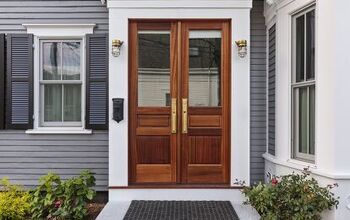
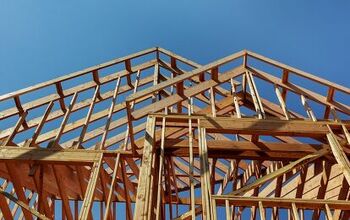
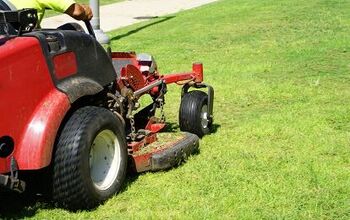
![Finishing Basement Without Permit [Is It Really Illegal?]](https://cdn-fastly.upgradedhome.com/media/2023/07/31/9070078/finishing-basement-without-permit-is-it-really-illegal.jpg?size=350x220)
